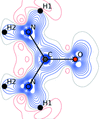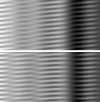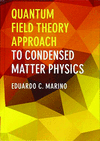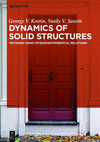issue contents
July 2019 issue

Cover illustration: Whilst algorithms exist to determine the crystallographic space group of a sample from its single-crystal or powder diffraction pattern, none exist to accomplish this from a measured atomic pair distribution function (PDF). Logically speaking, the symmetry information is in the PDF, which is just a Fourier transform of the powder diffraction intensity, but the Fourier transform mixes the information up in non-intuitive ways. This problem is therefore ideal for machine learning, as demonstrated by Liu et al. [Acta Cryst. (2019), A75, 633-643]. A convolutional neural network (CNN) model was trained to take as input a PDF (lower left) and give as output a rank-ordered list of most probable space groups. The classification ratio is the number of correct classifications divided by the total number of data sets in the test set from that space group, and the size of the colored dots represents the number of PDFs in that space group in the training set.
advances
research papers
foundations
research papers
 access
accessaddenda and errata
 access
accessbook reviews




 journal menu
journal menu


























